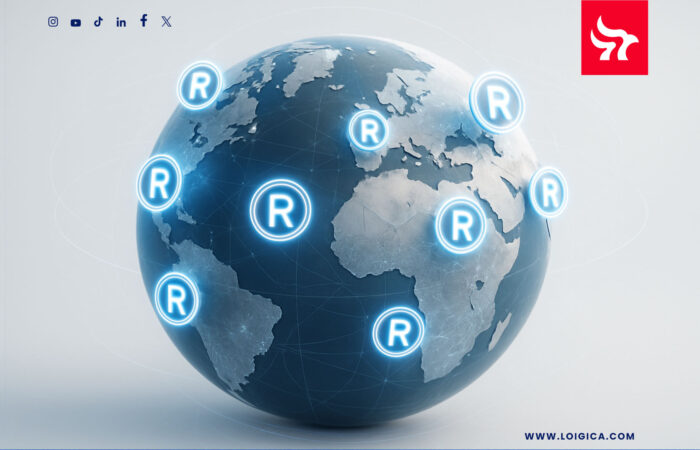Get the latest information
Suscribe to our newsletter and receive on your inbox every Monday everything you need to know on US Immigration
Every business that expands beyond its home country faces the question of how to protect its brand name or logo abroad. Small businesses and mid-size companies often ask, “Is there such a thing as an international trademark?”
In legal terms, trademarks do not automatically cover the whole world. Trademark rights are territorial – they are acquired and enforced country by country. In other words, a trademark registered in one nation is generally only protected in that nation. However, there are international agreements and systems that make it easier to secure protection in multiple countries.
Trademarks Are Territorial
Legally, there is no single, worldwide trademark registration that gives automatic protection in every country. A trademark right exists separately under the laws of each country or region where it is granted. Each nation (or regional jurisdiction) has its own trademark system, and a mark must be registered or legally recognized there to be protected.
Trademark rights are considered distinct in each country or jurisdiction in which they are obtained. . This means your U.S. trademark, for example, doesn’t by itself stop a competitor in China or Europe from using a similar name, and vice-versa.
Why are trademarks territorial? Historically, trademark law developed within each sovereign country. Every country has an interest in regulating brands and consumer protection in its own market. So, while your brand name might be known globally, the legal protection of that name is tied to national (or regional) laws. If you want protection in a given country, you generally need to secure rights in that country.
The term “international trademark” usually refers to a collection of trademark rights across multiple countries. rather than a single unified global right. For business owners, this means planning for trademark protection in each market where you operate or plan to expand.
Protecting a Trademark in Multiple Countries
So, how can you protect your trademark internationally given this territorial nature? There are a few paths:
- National Applications. The traditional route is to file for trademark registration in each country of interest, one by one. For example, a company might file in the United States, then in Canada, then in Mexico, etc. Each application is handled by that country’s trademark office under local law.
- International Application via the Madrid System. Instead of filing country by country, a business can use the Madrid System, administered by the World Intellectual Property Organization (WIPO), to seek protection in many countries with one application. The Madrid System is often what people mean by “international trademark registration.”
- Regional Trademarks. Some regions offer unified trademark registration. The EU’s system is the best-known example. Filing a trademark as an EU Trade Mark (EUTM) yields a single registration effective in all 27 EU member states. This is cheaper and easier than filing in each country like France, Germany, Italy, etc., separately.
In deciding where to register, think about your business presence and growth plans. You should seek protection in countries where you sell products or services, where you plan to expand in the near future, or where your brand might be vulnerable to copycats (for example, jurisdictions known for counterfeiting).
Most countries don’t require you to have actually used the trademark in that country before filing (use can usually come later), though a few do have use requirements or will expect use within a certain time after registration.
It’s wise to consult local counsel if unsure, but the key is to be proactive – it’s easier to secure rights upfront than to fight an infringer later.
In A Nutshell
For small and medium businesses, the term “international trademark” essentially means a strategy for securing your brand in multiple countries, backed by international agreements that simplify the process.
There isn’t a single global trademark certificate you can get, but there are convenient mechanisms to achieve worldwide coverage. Trademarks are territorial rights, so you must plan protection in each market of interest.
International treaties like the Paris Convention and TRIPS ensure that no matter where you go, you’ll get fair treatment and a solid baseline of rights for your mark. And tools like the Madrid System make the administrative side of international branding much easier than it was decades ago.

Harry Tapias
CEO and co-founder at LOIGICA. Provides strategic immigration guidance for businesses and individuals, drawing on finance, marketing, and legal expertise from DePaul University and Nova Southeastern University. Specializes in H-1B, L-1, and PERM Labor Certification. Recognized for an empathetic and innovative approach, he has earned appointments to the boards of Vizcaya Museum and Gardens and the Miami-Dade County History Preservation Board.
This blog was written with asistance of generative AI. It is provided for informational purposes only. It does not constitute legal advice. The information presented here is based on general principles of U. S. immigration laws, as well as general information available for public search on public matters, as of the date of publication. Immigration laws and regulations are subject to change and individual circumstances may vary. If you need expert counceling on immigration matters, contact one of our attorneys.


Family-Based Petitions to United States: the real heart of the immigration system



